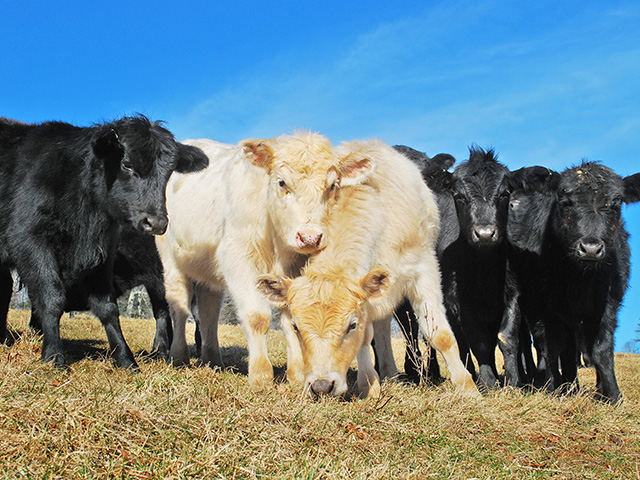Optimistic Beef Outlook
Upside for 2021 Beef Market at 5% or More
HELENA, Ala. (DTN) -- No guarantees, but it looks like the second half of this year is poised to be positive for cattle producers. Looking for a number? An upside of 5% to 8% is in the cards, depending to some degree on the hand drought-challenged regions are dealt moving forward.
Veteran cattle marketing expert with Oklahoma State University Derrell Peel shared those thoughts with attendees at the South Dakota State University Beef Day, cautioning he had a similar outlook for 2020.
"Last year at this time, we started 2020 saying we thought there would be modest improvement in cattle prices, maybe 5%. Then the pandemic hit, and we revised everything. We ended down 5% for the year," he said. "This year, we are back looking for modest improvement, whether it's calves, feeder cattle or fed cattle we are talking about. There will be some seasonal volatility, but modest improvements are possible. Much of this happens in the second half of the year."
Peel isn't oblivious to the potential impact of drought and higher feed prices, noting either or both of these challenges or some other "black swan event" could flip the positive outlook.
DRIFTING SUPPLIES
The trend Peel said he sees now is one where cattle numbers are "drifting slowly" lower after a peak in 2019. He noted current forecasts project, between 2020 and 2021, the industry will see beef cow numbers drop about 0.6%, beef replacements increase 0.1%, feeder supplies drop 0.2% and cattle on feed climb 0.3%.
P[L1] D[0x0] M[300x250] OOP[F] ADUNIT[] T[]
"In 2020, we saw the calf crop down 1.3%, so we are working toward fewer cattle as an industry, just not dramatically fewer. The decline is expected to support prices from a supply standpoint," added Peel.
Because numbers are largely steady compared to year-earlier levels, he said the industry is in a position where, based on what happens the next couple of months with drought and feed prices, it can pivot either way. Liquidation in some areas may not be off the table, depending on regional circumstances.
"Right now, the industry is really looking for the market to tell it where to go from here. After last year, we may actually be back into some mode of expansion. I don't see active liquidation, but we are poised to move either direction depending on what happens," he stressed.
Higher feed prices, Peel noted, may have feeders looking to pay someone else to put weight on calves, reducing time on feed. That could play well for stockers and those in areas with forages to support growth.
"Go back to August 2020 and we see a dramatic run-up in corn and soybean prices. If you are a crop producer, there are advantages to that. But it impacts feedlot cost of gain and all cattle producers in terms of supplemental feeds for both energy and protein. These higher corn prices don't mean we won't feed cattle, but we may feed them differently. Feedlots will make different decisions about placement weights on cattle, and they will look at the difference between buying pounds and putting on pounds. They may want to buy bigger and cut down on the days on feed. So, we may see some changes we haven't for several years."
CONSUMER DEMAND
Looking at consumption of all meats and how the competition stacks up against beef, Peel noted, between 2020 and 2021, beef is expected to see a 1% to 1.5% drop in production, pork is expected to increase 1.5%, and broilers to increase 0.5%. Meanwhile, per capita meat consumption is expected to drop by about 1.8%, to 220.5 retail pounds, the majority of that being broilers (94.5 pounds). Beef is next in line at 56.6 pounds, with pork at 51.1 pounds.
Internationally, beef will still be highly desirable. Peel said Brazil will continue to hold the top spot as the largest world exporter of beef, with the U.S. in a good position to move slightly above Australia this year, a country that usually holds the No. 2 spot.
China will continue to the be largest world importer of beef.
"China has exploded," said Peel. "The law of Chinese markets is that any number multiplied by 1.4 billion people is a big number. Beef is not their main meat, but a little bit more beef multiplied by 1.4 billion is a big number. Because China is the driver of all meat markets today, we have to stay attuned to the dynamics there and what is happening."
Victoria G. Myers can be reached at Vicki.Myers@dtn.com
Follow her on Twitter @myersPF
(c) Copyright 2021 DTN, LLC. All rights reserved.






